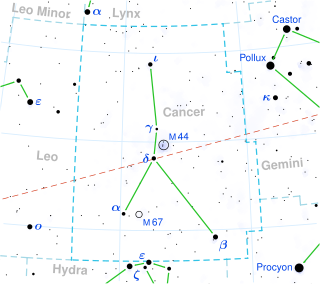
Tiberius Claudius Caesar Augustus Germanicus was a Roman emperor, ruling from AD 41 to 54. A member of the Julio-Claudian dynasty, Claudius was born to Drusus and Antonia Minor at Lugdunum in Roman Gaul, where his father was stationed as a military legate. He was the first Roman emperor to be born outside Italy.

The Julio-Claudian dynasty comprised the first five Roman emperors: Augustus, Tiberius, Caligula, Claudius, and Nero.

Tiberius Julius Caesar Augustus was Roman emperor from AD 14 until 37. He succeeded his stepfather Augustus, the first Roman emperor. Tiberius was born in Rome in 42 BC to Roman politician Tiberius Claudius Nero and his wife, Livia Drusilla. In 38 BC, Tiberius' mother divorced his father and married Augustus. Following the untimely deaths of Augustus' two grandsons and adopted heirs, Gaius and Lucius Caesar, Tiberius was designated Augustus' successor. Prior to this, Tiberius had proved himself an able diplomat, and one of the most successful Roman generals: his conquests of Pannonia, Dalmatia, Raetia, and (temporarily) parts of Germania laid the foundations for the empire's northern frontier.

Nero Claudius Drusus Germanicus, also called Drusus the Elder, was a Roman politician and military commander. He was a patrician Claudian but his mother was from a plebeian family. He was the son of Livia Drusilla and the stepson of her second husband, the Emperor Augustus. He was also brother of the Emperor Tiberius; the father of the Emperor Claudius and general Germanicus; paternal grandfather of the Emperor Caligula, and maternal great-grandfather of the Emperor Nero.

Cancer is one of the twelve constellations of the zodiac and is located in the Northern celestial hemisphere. Its old astronomical symbol is (♋︎). Its name is Latin for crab and it is commonly represented as one. Cancer is a medium-size constellation with an area of 506 square degrees and its stars are rather faint, its brightest star Beta Cancri having an apparent magnitude of 3.5. It contains ten stars with known planets, including 55 Cancri, which has five: one super-earth and four gas giants, one of which is in the habitable zone and as such has expected temperatures similar to Earth. At the (angular) heart of this sector of our celestial sphere is Praesepe, one of the closest open clusters to Earth and a popular target for amateur astronomers.

I, Claudius is a historical novel by English writer Robert Graves, published in 1934. Written in the form of an autobiography of the Roman Emperor Claudius, it tells the history of the Julio-Claudian dynasty and the early years of the Roman Empire, from Julius Caesar's assassination in 44 BC to Caligula's assassination in AD 41. Though the narrative is largely fictionalized, most of the events depicted are drawn from historical accounts of the same time period by the Roman historians Suetonius and Tacitus.

The gens Claudia, sometimes written Clodia, was one of the most prominent patrician houses at ancient Rome. The gens traced its origin to the earliest days of the Roman Republic. The first of the Claudii to obtain the consulship was Appius Claudius Sabinus Regillensis, in 495 BC, and from that time its members frequently held the highest offices of the state, both under the Republic and in imperial times.

The Beehive Cluster, is an open cluster in the constellation Cancer. One of the nearest open clusters to Earth, it contains a larger population of stars than other nearby bright open clusters holding around 1,000 stars. Under dark skies, the Beehive Cluster looks like a small nebulous object to the naked eye, and has been known since ancient times. Classical astronomer Ptolemy described it as a "nebulous mass in the breast of Cancer". It was among the first objects that Galileo studied with his telescope.
Tiberius Claudius Nero may refer to:

SaGa Frontier is a 1997 role-playing video game developed by Square for the PlayStation. The game was published by Sony Computer Entertainment (SCEA) in North America on March 24, 1998. It is the seventh game in the SaGa series, and the first to be released on the PlayStation. It is also the first in the series to be released under the SaGa brand outside Japan; previous overseas releases had used the Final Fantasy brand instead. A remastered version featuring additional characters, events and features was released on April 15, 2021 for Android, iOS, Nintendo Switch, PlayStation 4 and Windows.

Gamma Cancri, or γ Cancri, is a star in the northern constellation of Cancer. It is formally named Asellus Borealis, the traditional name of the system. Based on parallax measurements, it is located at a distance of approximately 181 light years from the Sun. The star is drifting further away with a radial velocity of 29 km/s. In 1910 this star was reported to be a spectroscopic binary by O. J. Lee, but is now considered a single star. Since it is near the ecliptic, it can be occulted by the Moon and, very rarely, by planets.

Delta Cancri is a double star about 140 light-years from the Sun in the constellation of Cancer.
Claudius was the fourth Roman Emperor, reigning from AD 41 to his death.
Tiberius was the second Roman emperor. The term may also refer to:

Asellus is a character in the 1997 video game SaGa Frontier, and one of its seven main characters. She is a human who became half-Mystic, a vampire-like race, after nearly dying after being struck by a carriage and saved by being given blood from a Mystic named Orlouge. Her design was created by character artist Tomomi Kobayashi, and her scenario was written by Miwa Shoda. Shoda was inspired to write a maiden game in a world of demons by multiple sources, including Takarazuka Revue, Otome games, and Shōjo manga, with Asellus' Mystic origins inspired by a dream with the same premise as Asellus'. Asellus speaks masculine when talking to women and feminine when talking to men.
Tiberius Claudius Asellus was a tribunus militum in the army of the consul Gaius Claudius Nero in 207 BCE, praetor in 206 BCE, when he obtained Sardinia as his province, and plebeian aedile in 204 BCE.
Tiberius Claudius Asellus was a man of Ancient Rome of the equestrian order. He was deprived of his horse, and reduced to the condition of an Aerarii by Scipio Aemilianus in his censorship in 142 BCE.
Tiberius Claudius Asellus is the name of several ancient Roman men:










